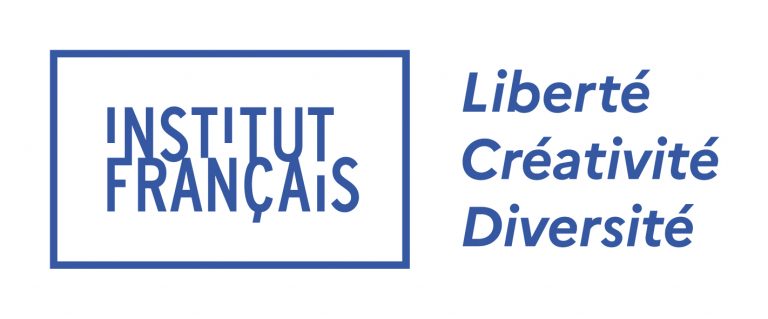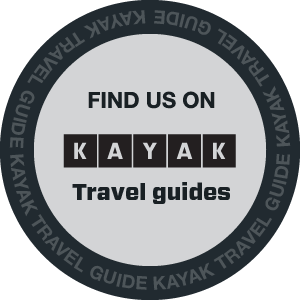
Discover and explore the digital revolution from the perspective of its creators
Digital technologies have become an integral part of our daily lives.
The digital revolution—some even describe it as a civilizational shift—emerged in the period following World War II and has been developing exponentially for more than fifty years. Since the early 21st century, when the internet became widely adopted, each decade (or even each year) brings new tools, technologies, and practices, which can sometimes be difficult to grasp and master. So challenging, in fact, that even though we coexist with digital cultures, we may not truly understand them.
Unless we are computer scientists, engineers, or historians of science, our knowledge of digital technologies primarily comes from our personal use, curiosity, and what we discover on our own. We learn to navigate a variety of tools available to us, continuously training ourselves to adapt to new versions of software, applications, computers, and smartphones. This constant learning can sometimes leave us feeling overwhelmed.
Almost unconsciously, we also adopt the belief that digital technology makes us more efficient, expands our possibilities, and grants us greater freedom, as cyberspace appears to escape physical constraints. However, these dreams of freedom, empowerment, and independence are largely contradicted by the dominance of multinational corporations that control and claim ownership of our data, driven by the pursuit of profit.
The need to evaluate the state of these digital cultures is becoming ever more pressing, especially in a time when frequent lockdowns and social retreat encourage us to be more connected. To better guide our use, consumer habits, and future life choices, we must recognize, define, and gain a deeper understanding of them.
In the exhibition Escape, a Journey into the Heart of Digital Cultures, you can immerse yourself in the history of the internet, as well as the world of big data and data control, media, and cyber surveillance. It questions the position of humans at the center of these new materials and the virtual ecosystem, and raises the issue of how much we are still connected to the living and physical world that surrounds us in an increasingly digital environment.
The exhibition presents the discovery of digital cultures and the questions they raise through the vision of those who have been involved in these transformations since their inception: creators, artists, cyber activists, production houses, directors… These women and men, pioneers, researchers, often guide us with their beliefs or actions and warn us… long before politicians! Escape, a Journey into the Heart of Digital Cultures invites us to step aside and look at this digital world with a critical eye, to momentarily escape its grip and regain our free will.
Press the Escape key on your computer keyboard and join us on this truly real journey through cyber cultures: welcome!
This exhibition has been realized with the support of:
The History of the Internet
The history of the #internet is primarily a technological adventure that transforms how people connect with one another.
In the 1990s, the emergence of the World Wide Web made the internet, initially used mainly by academics, scientists, and the military, more accessible to the general public. With the help of hyperlinks, the #Web simplifies navigating between content. Now, data can be connected, shared, acquired, and exchanged effortlessly. What a breath of fresh freedom!
This freedom was first envisioned by communities from the 1960s, who sought to create connections among people that could be considered the ancestors of #social networks. These #hackers aimed to link with each other and exchange data, using devices like the so-called “blue box” to hack into the American telephone network and communicate across the country for free. Besides the internet, other networks still exist that might endure even longer, such as Usenet. Emerging in the 1980s, Usenet involved sharing articles or other data on forums. At the beginning of the 21st century, interest in Usenet resurged due to its efficiency in transferring content.
Technologies are transforming our relationship with information. Everything has changed—how information finds us, how we share it, and especially how it is created. Each individual can access diverse and simultaneous information streams, becoming a potential medium for creating, editing, and sharing content. Checking emails on a computer while playing video games in another tab, watching YouTube videos on a #smartphone, #streaming music, replying to social media messages with #emojis: our brains have adapted to jumping from one activity and piece of information to another, much like hyperlinks function on #web pages.
The phenomenon of hyperconnectivity also brings about its own syndromes with peculiar names, such as #FOMO (Fear of Missing Out) and #FOBO. These continuous stimuli, delivered throughout the day in fragments through notifications and scrolling, activate our neurotransmitters, like dopamine—the molecule responsible for pleasure, motivation, and addiction—affecting our behavior, shortcomings, fears, and even our laziness…
How do we cope with hyperconnectivity in an era that encourages us to connect more and more? How can we avoid “addiction”?
Should we let ourselves be led and become completely dependent? Can we disconnect?
Data Warfare
In 1996, John Perry Barlow wrote the Declaration of the Independence of Cyberspace in protest against the Telecommunications Act, which had been enacted by then-U.S. Vice President Al Gore. In it, he championed the idea that no government or form of authority could dictate or claim ownership of the #internet. Today, it is clear that power lies in the hands of #GAFAM (also known as the tech giants).
These large companies, which dominate the digital market, have developed methods to exploit personal data in the digital world with the aim of getting users to subscribe to their services or purchase their products. The internet user thus becomes a customer. E-commerce platforms (like Amazon), intermediary platforms (like Uber or Airbnb), and #social networks (like Facebook, Instagram…) are omnipresent and indispensable in the daily lives of billions of users, who blindly provide their personal data. These #data, or the new “black gold,” can then be exchanged, sold, or even manipulated and falsified at the expense of our fundamental rights.
What defines our way of life in cyberspace more than constitutional values is, therefore, #code – as Lawrence Lessig precisely describes in his 2000 article The Code is Law.
Communities are becoming dependent on these technologies, their codes, and ultimately the companies that control them. The development of #algorithms, #artificialintelligence, and robotics further amplifies this phenomenon.
In response to this, states are striving to defend their #digitalsovereignty, meaning the ability to act in cyberspace to uphold their values and rights, rather than the rules dictated by economic entities.
The rise in information flows and changed media usage habits have enabled the emergence of several new electronic formats for accessing information.
But how can we trust such content and the temptations that surround and overwhelm us in the era of #fakenews and the emergence of video hoaxes, known as #deepfakes? In upcoming elections, these false contents – like the altered video of Nancy Pelosi, the then Speaker of the U.S. House of Representatives, from 2020, which suggested she was severely intoxicated – could potentially change the outcome of the elections.
One might justifiably ask: can we still trust what we see or read online? What tools will we have in the future to help us verify facts in an era where truth is no longer self-evident? To alert us to these dangers, creators use the same tools for forgery, producing ironic fake journalism, exploiting images and videos, manipulating our perception, or even giving (virtual) life to individuals and artificially created music groups.
Today, every computer has a camera, just as we always have our #smartphones within reach. Cameras, alongside #smart devices, are multiplying like mushrooms after rain, both in public and private spaces, to the point where it’s nearly impossible for us to go through daily life without being recorded. Under the guise of security and social control, are we not losing our right to anonymity?
Cameras are just the tip of the iceberg in a world where we are disclosing more and more about ourselves. With new face recognition #algorithms that can not only identify us but also analyze our emotional state, we are sharing not just our image, but also a more personal part of ourselves.
Digital artists use these flows or exploit codes to raise awareness about the risks brought by this ubiquitous surveillance.
Digital Humanity
The industrial and later digital revolutions have gradually distanced us from nature. We built machines that made our daily lives easier and contributed to progress, leading the world into a new era. The current pandemic era suggests that new societal forms will continue to emerge in the years to come. We have changed our approach to work, thanks to numerous digital platforms, testing new ways of communication, but we still have a long way to go in terms of social relationships. Basic needs are fundamental to our humanity: play, laughter, creation, imagination, and diversity…
How can we, in today’s world, re-evaluate these needs in a balanced and fair way, and restore humanity’s place in the world? One possible solution is to reframe technology, through new forms of awareness and digital education. The #maker movement, for example, uses digital technology as a tool for experimentation, learning, and collective creation. Learning through play is an exceptional way to develop skills.
The kitten, while playing, isn’t trying to rack up millions of likes on YouTube, but rather its primary goal is to practice how to hunt. Perhaps the horde of #gamers who grew up playing Minecraft and Fortnite, and who create content and play attentively every day, will form a generation of urbanists, architects, #hackers, makers, and other homo faber 2.0 who will challenge the world as we know it.
The digital revolution offers us an enriched world, a society full of opportunities as well as pitfalls, freedoms alongside injustices, intelligence mixed with foolishness… What matters is what we do with this technology, the new ways it enables us to use it, and the creative possibilities it presents.
How to browse the web, click, and hack in the name of the environment, human rights, and coexistence?
Just like in the physical world, in cyberspace we also make the decisions on how we act. Conscious web browsing means that we are not subjugated by technology, but understand and control it well enough to discern how to act properly, ethically, and sustainably. Today, as users of digital content and services, we must be aware of concepts such as #digitalwork, #plannedobsolescence, #cyberbullying, and other consequences that the digital world brings to our society and planet.
To restore more power to communities and #openaccess over platforms and better distribute wealth, we must learn to be mindful of such abuses, free ourselves from conventional consumer habits and digital world practices, and be open to adopting new perspectives, such as #digitalwisdom or conscious web browsing. These will be the greatest challenges of digital education for future generations.



Opening hours
Contact us
+38664233500
Društvo računalniški muzej © 2024. All rights reserved.

